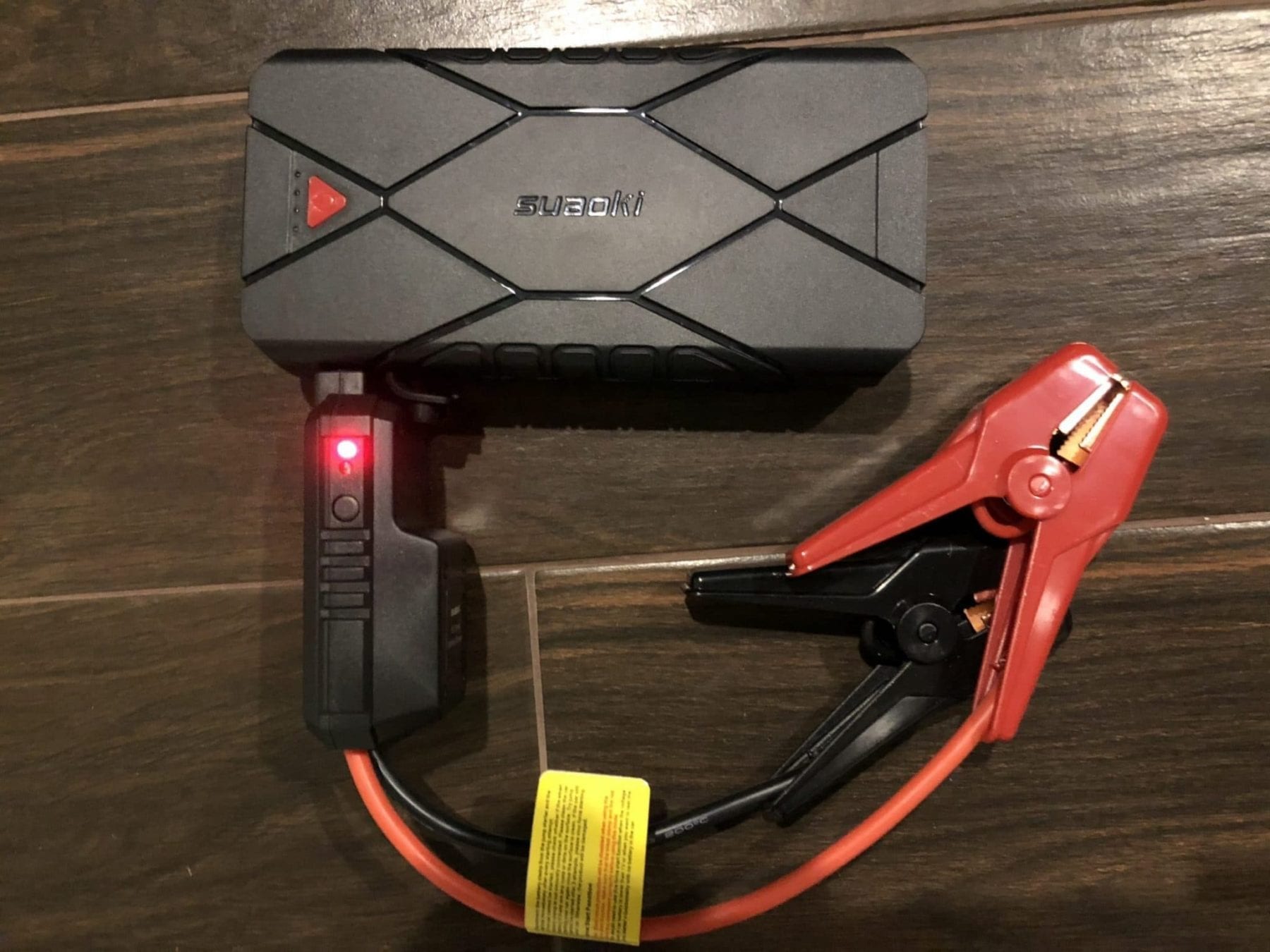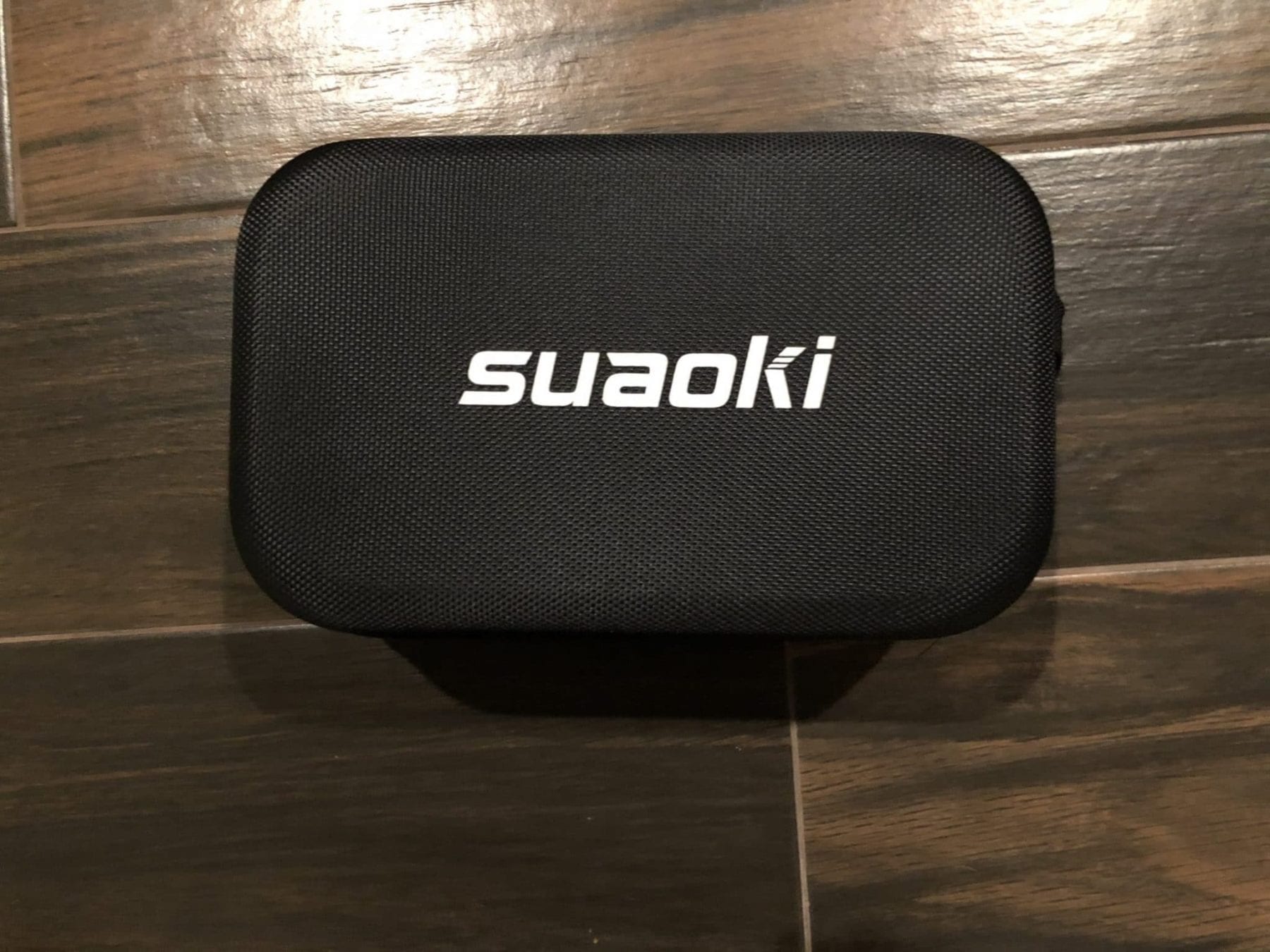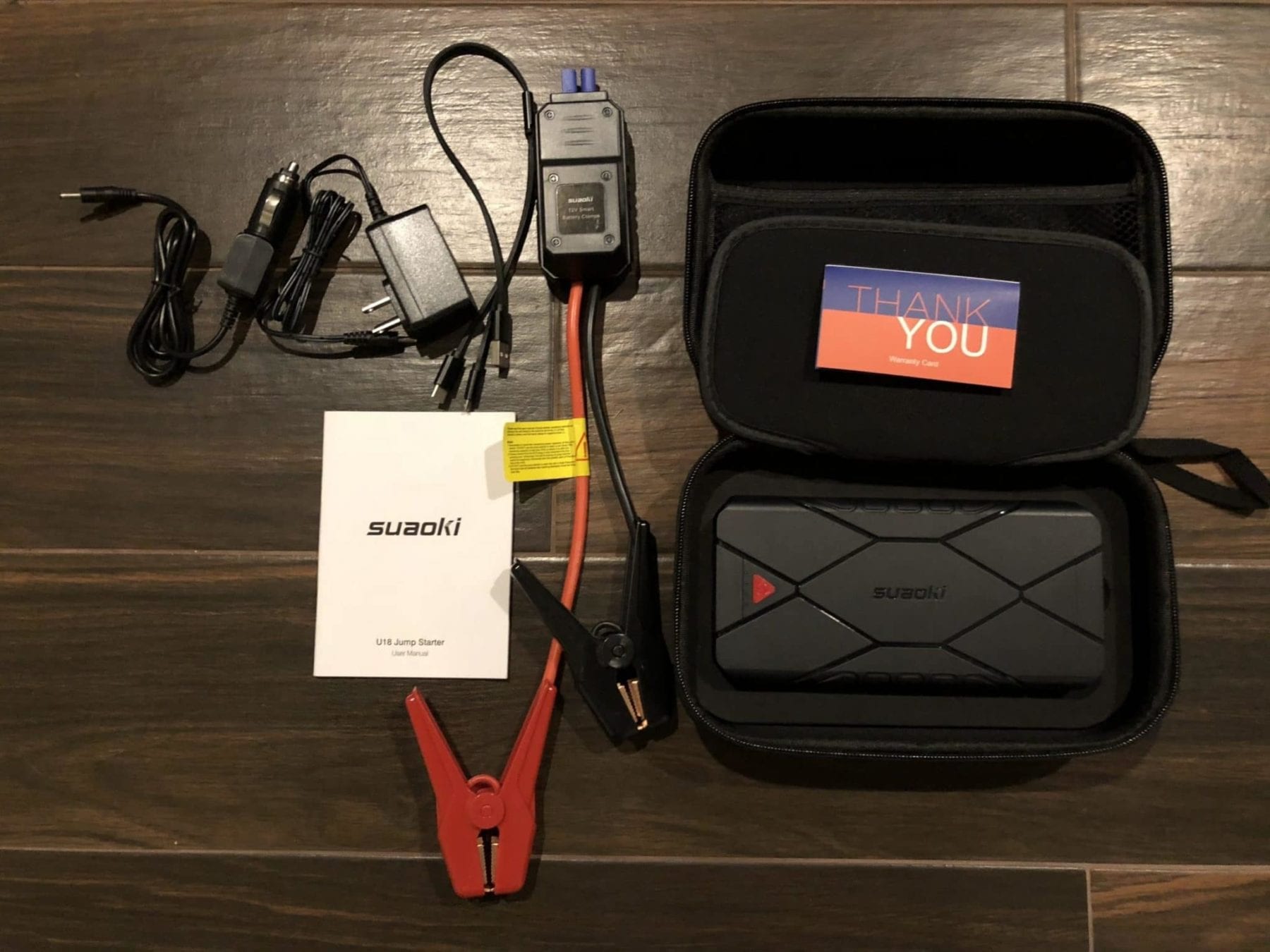Home > Product Installs & Reviews > Product Reviews > Car Accessory Reviews > Suaoki U18 Jump Starter – Keep One Handy
If a car battery is going to die it will choose the worst possible time. Often, it’s cold and dark and there’s no one around to ask for a jump start. If your cellphone is charged and you’ve got a signal you could call for help, but how long will that take to arrive?
What you need is a jump starter, if not for yourself, then for your nearest and dearest. That’s why they make great gifts for family members. Here we’ll explain what a jump starter is, how you’d use it and what features to look for. Then we’ll review one of the newest and most impressive jump starters on the market.
Quick links
- A jump starter primer
- Features to look for
- How to use
- Product review: Suaoki U18 jump starter
- What's in the box
A jump starter primer
A jump starter is a battery that holds enough charge to start the engine in a car or truck. Fortunately, they’re far smaller than the batteries used in vehicles. That’s because they use modern lithium-ion batteries, similar to those in a laptop computer, tablet or cellphone. Most are around the size and weight of a chunky paperback book, so they’ll fit in a glovebox.
Along with the actual battery pack you get two thick cables with clamps. These go onto the terminals of the battery in the vehicle you need to start. Then you start the car as you would if you were getting a jump start from another vehicle.
Many jump starters also provide USB outlets for charging electronics, along with some form of flashlight. The key though is to keep it charged, and there are usually several options for doing that. Either plug into a 120V wall outlet, use a USB input, or charge it from your car’s cigarette lighter.
Features to Look For
The two most important things to look for are capacity and peak amps.
Capacity tells you how much charge the jump starter battery can hold. This is given in milliamp-hours, written mAh. Inexpensive starters will be around 8,000mAh while bigger and better units are up at 16,000mAh or more.
Capacity is important because that governs how many starts you can get from the starter before it needs recharging. (Or for how long you can charge a cellphone or use the flashlight.) It’s hard to say how many starts you can get from a given battery because it depends in part on how cold the engine is. However, 8,000mAh might deliver up to 10 starts while 16,000mAh could give more than 20.
We usually think bigger is better but that’s not necessarily the case. There are two things to remember with jump starters:
- Higher capacity means the charger is larger and heavier. That could make it harder to store.
- Recharge time is longer for a bigger battery.
Peak amps is a measure of the electrical energy a battery can deliver. You need more amps to start a bigger engine, and when it’s colder. Note also that diesel engines need more amps than a comparably-sized gasoline engine because they run on higher compression ratios. (That makes them harder to turn over.)
A jump starter capable of delivering 500 peak amps should be able to start a gasoline engine of up to 5 liters. For diesel engines it’s limit would be 3 liters.
Once you’ve thought about those two points there are some other things to look for.
- Reverse polarity detection
Battery terminals are colored red and black, and so too are the clamps on the cables from the charger. However, when you’re in a rush or it’s dark you can still get them the wrong way around. That could kill the battery, but this feature will stop that from happening.
- Charge display
How do you know that your jump starter is ready for use? Well ideally it has a display that shows how charged it is.
- Charging methods
There’s usually a wall adaptor that lets you plug the jump starter into a regular electrical outlet. There may also be a car adaptor for charging direct from the in-car outlet. (What we once called the cigarette lighter.) Some starters also have a USB-style input.
- Outlets for device charging
Besides an outlet/socket where you plug in the jump start cables, most jump starters offer one or more USB ports. It’s wise to check what format they are, and look out for the special ‘Quick Charge’ USB ports.
How to use
There are three aspects to consider: charging, jump starting, and storage. Let’s go through each in turn.
- Charging
Usually the fastest way of charging a jump starter is by plugging it into a wall outlet. Charging via USB or from a car outlet is almost always slower.
- Jump starting
First, plug the cables into the jump starter. Then hook the red clamp to the red battery terminal and the black clamp to the black battery terminal. With the connections made, climb into the driver’s seat and start the engine as you would normally.
With the engine running, (and the car in Park,) unplug the cables from the jump starter, take the clamps off the battery and put it away.
- Storage
There are two points to consider here. First, you want to keep the jump starter charged-up. Once a month pull it out and check the charge level indicator (if it has one.) If it’s down to half, or you can’t tell, plug it in and top it up. That way it’ll be ready to use when you find yourself stuck.
The other point to think about is where to store it. Jump chargers use lithium-ion batteries, and there have been reports of them catching fire if they get too hot. For that reason, Consumer Reports suggests keeping your jump starter somewhere it will stay cool, like the trunk, rather than in the passenger compartment.
Product Review: Suaoki U18 Jump Starter
Suaoki isn’t exactly a household name but they make a wide range of electrical tools for car owners as well as solar power and laser measurement devices. The U18 is in the middle of their jump starter range. That puts it midway between the K12 300A starter you’d use for your lawnmower and the U28 and U29 starters that will start a large truck or boat engine.
Measuring slightly less than 11.9 x 8.9 x 4.7” and weighing under 3 pounds, this is about the size and weight of a telephone directory (if anyone remembers those!) That makes it small enough to stow in a glovebox or center cubby but big enough to be used with the vehicles that most people drive. The designers gave some thought to the appearance, and this is quite attractively styled rather than being something you’d hide away.
For those who want the numbers, capacity is 16,000mAh and peak amps is 1,200. That makes it powerful enough to start a gasoline engine up to 7 liters and a diesel up to 5. You should also get at least 20 starts from it, and maybe up to 30, although as noted previously, that depends a lot on conditions at the time.
The rather short jumper cables connect to the starter with a chunky plug. This incorporates polarity protection along with overcurrent, short-circuit and over-voltage protection. At the other end the battery clamps are big and sturdy.
The U18 is charged from either a 15V dc adaptor or via USB Type C cable. Recharge time at 15V is around 4 to 5 hours. LEDs show the charge level.
For charging other devices there’s regular USB plus a Quick Charge USB outlet.
Also built-in is a flashlight. This is an excellent idea because it will quite likely be dark when you want to use your jump starter. The one on the U18 is bright enough to be useful and will flash if you need to draw attention to yourself. There’s also a red light that could be used as a warning signal.
After using this jumper a few times, one of the frustrations I had was how loose the connection was between the cables and the unit. If there's any tension on the cables it doesn't stay plugged in.
What’s In The Box:
- Suaoki U18 Jump Starter
- Protective carrying case
- Battery Smart Clamps
- 12V Charge Chord
- AC Charge Chord
- Instructions Manual






Essential emergency gear
Every car owner should keep a jump starter like the U18 in their vehicle. It’s compact yet powerful enough to start most engines, and easy for anyone to use. Buy one for yourself and more as gifts for family members!
Here's a few places you can purchase this jump starter at:
